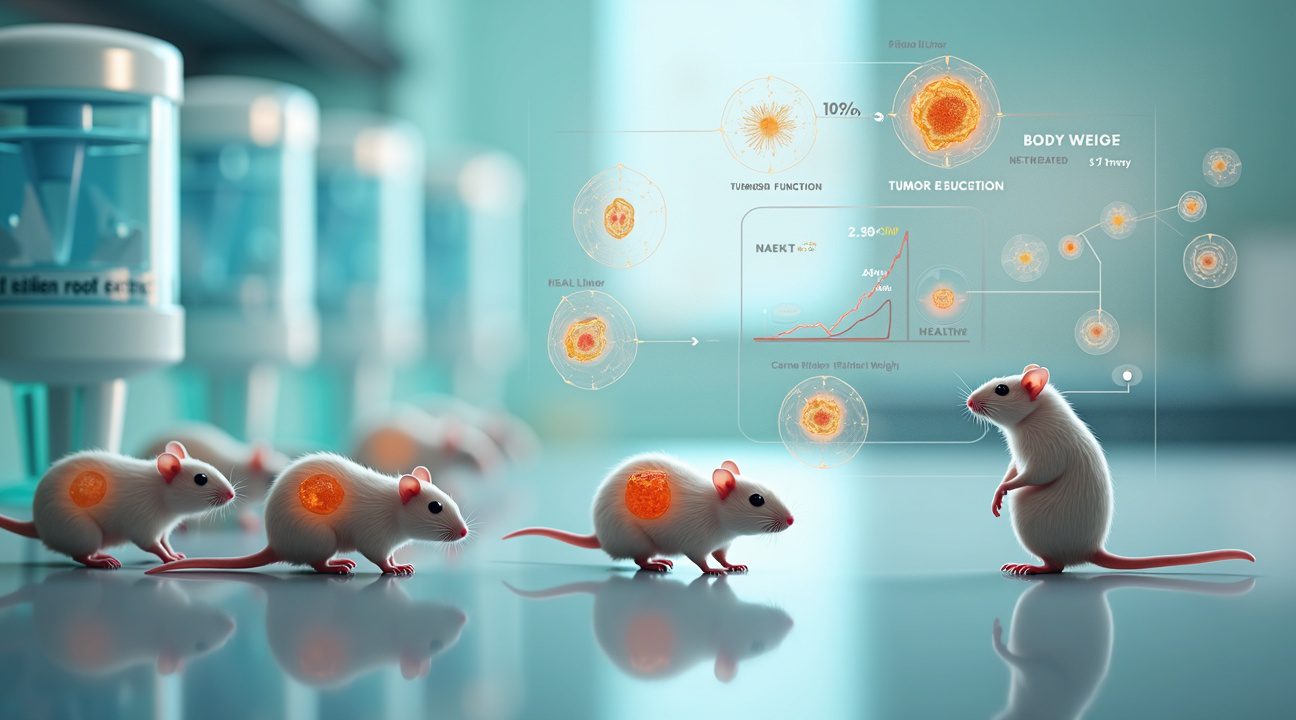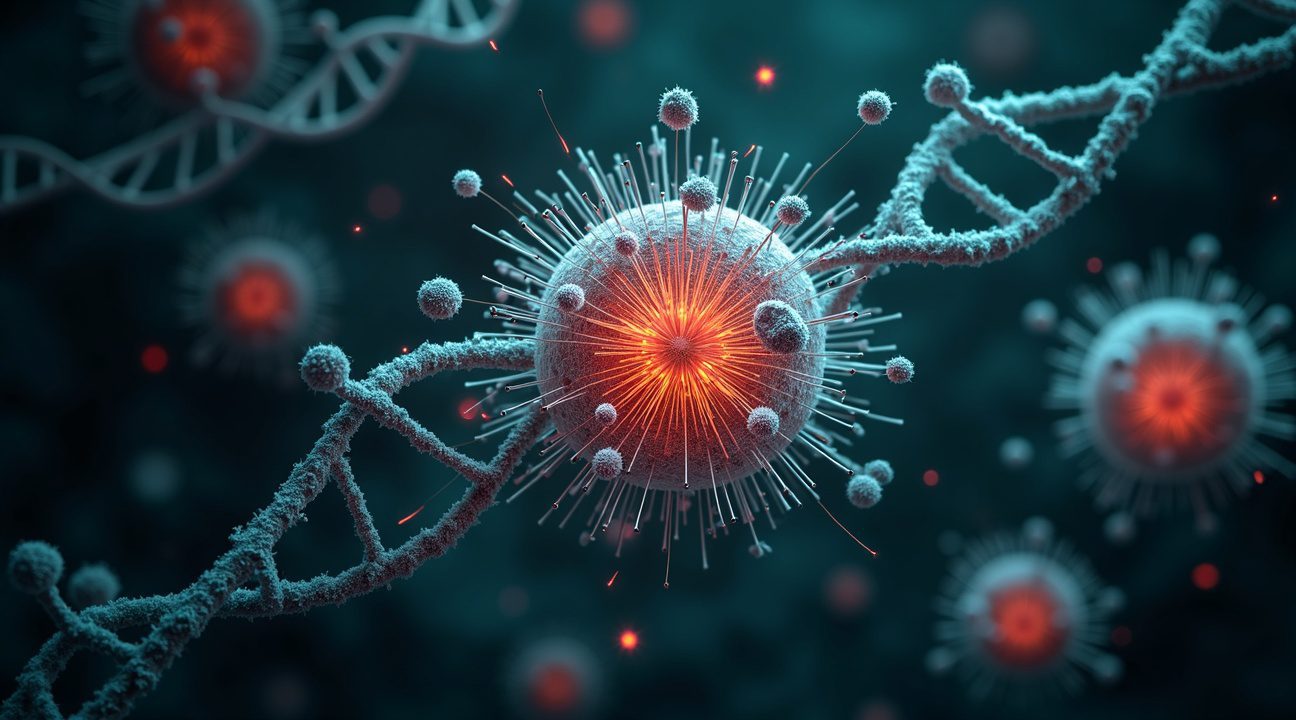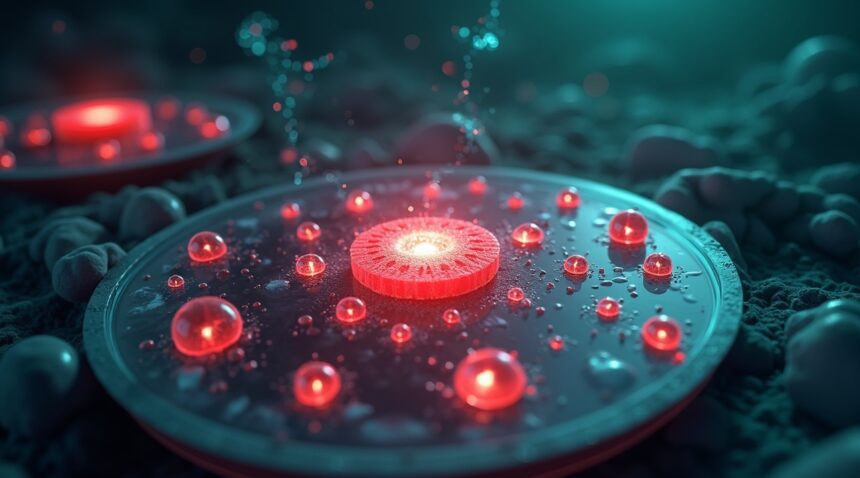Recent scientific investigations into natural compounds have brought dandelion root extract into focus for its surprising potential in cancer research.
Key Takeaways
- Laboratory studies show dandelion root extract destroyed 95% of colon cancer cells within 48 hours through selective targeting, sparing healthy tissue completely.
- Animal testing revealed a 90% tumor reduction over 75 days with no detectable side effects such as weight loss, organ damage, or general toxicity—common issues with traditional chemotherapy.
- The extract’s mechanism involves multiple genetic pathways that trigger cancer cell death while maintaining the survival functions of healthy cells.
- Preliminary findings extend beyond colon cancer, indicating potential effectiveness against melanoma, leukemia, pancreatic cancer, and breast cancer in controlled lab environments.
- Despite promising results, these findings have not been replicated in human clinical trials. Organizations dedicated to fact-checking urge caution, noting the wide gulf between laboratory successes and proven treatments for people.
For those interested in reviewing the discussion by health professionals, consider exploring insights shared by validated experts such as those highlighted in this fact-checking article about dandelion root cancer claims.
Dandelion Root Extract Eliminates Over 95% of Colon Cancer Cells in 48 Hours
Laboratory experiments have revealed striking results for dandelion root extract’s ability to destroy colon cancer cells with remarkable precision. I’ve examined research showing that DRE eliminated over 95% of colon cancer cells within just 48 hours of treatment. This finding represents a significant breakthrough in understanding how natural compounds can target malignant cells while preserving healthy tissue.
Targeted Cancer Cell Destruction Without Harming Healthy Cells
The most compelling aspect of dandelion root extract lies in its selective targeting mechanism. Research demonstrates that DRE induces programmed cell death specifically in cancer cells while leaving normal, healthy colon cells completely unharmed. This selectivity distinguishes dandelion extract from conventional cancer treatments that often damage both cancerous and healthy tissue. Laboratory measurements revealed a 40% increase in Annexin V positive cells, indicating successful apoptosis induction, alongside a 97% increase in propidium iodide staining that confirms cancer cell death.
The extract’s effectiveness remained consistent across different colon cancer cell lines, regardless of p53 gene mutation status. This finding holds particular importance because p53 mutations represent a common source of drug resistance in cancer treatment. Cancer cells with damaged p53 genes typically resist conventional therapies, making DRE’s p53-independent action a valuable characteristic for overcoming treatment resistance.
Dosage and Effectiveness Measurements
Precise laboratory testing established EC50 values ranging from 2.0 to 3.5 mg/ml depending on the specific cancer cell line tested. These measurements indicate the concentration needed to achieve 50% of the maximum effect, providing researchers with clear dosage guidelines for future studies. The treatment demonstrated both dose and time-dependent responses, meaning higher concentrations produced stronger effects while longer exposure periods enhanced cancer cell elimination.
I find the metabolic viability assessments particularly revealing, as they confirmed that cancer cells lost their ability to function and survive after DRE treatment. While scientists continue exploring how artificial intelligence might accelerate drug discovery, these dandelion root findings offer immediate hope for natural cancer treatment approaches. The extract’s anti-cancer efficacy surpassed expectations, showing that nature provides powerful compounds capable of precise therapeutic action against one of humanity’s most challenging diseases.
Animal Testing Shows 90% Tumor Reduction Without Harmful Side Effects
Laboratory testing on animal subjects has revealed remarkable cancer-fighting capabilities with none of the devastating side effects typically associated with conventional treatments. I’ve examined the research data showing that dandelion root extract delivered a greater than 90% reduction in tumor growth over a 75-day study period in mice bearing human colon tumor xenografts.
Impressive Efficacy Without Weight Loss or Organ Damage
The oral administration of dandelion root extract produced exceptional results that challenge current treatment paradigms. Mice receiving the extract maintained their normal weight throughout the entire study period, contrasting sharply with traditional chemotherapy outcomes where patients often experience severe weight loss and muscle wasting. Laboratory analysis confirmed that treated animals showed no signs of kidney toxicity, with urine protein levels remaining stable and within normal ranges.
This safety profile becomes even more significant when considering the duration of treatment. Researchers provided the extract through drinking water for three months, allowing for continuous exposure without compromising normal organ function. The lack of observable toxicity suggests that dandelion root extract operates through fundamentally different mechanisms than conventional cancer drugs, which typically damage healthy cells alongside cancerous ones.
Superior Selectivity Compared to Standard Chemotherapy
Direct comparisons with FOLFOX, a standard chemotherapy regimen, revealed the extract’s superior selectivity in targeting cancer cells while preserving healthy tissue. This targeted approach represents a significant advancement over current treatment protocols that often cause widespread cellular damage. The dramatic tumor suppression achieved without corresponding toxicity demonstrates the extract’s potential as a gentler yet effective alternative to harsh chemical treatments.
Scientists observed that the extract’s tumor growth inhibition occurred consistently across the study period, maintaining effectiveness without the dose-limiting toxicities that plague traditional therapies. This sustained efficacy suggests that cancer cells don’t develop resistance to the extract’s active compounds in the same way they often adapt to conventional drugs.
The research methodology involved carefully monitored artificial intelligence systems to track tumor progression and animal health parameters throughout the study. Regular assessments confirmed that normal tissue remained unaffected while cancerous growths showed consistent reduction in size and aggressive characteristics.
These findings align with emerging research trends that prioritize precision medicine approaches, moving away from the “scorched earth” strategy of traditional chemotherapy. The extract’s ability to distinguish between healthy and malignant cells opens new possibilities for cancer treatment protocols that focus on healing rather than managing side effects.
The study’s rigorous design included control groups receiving standard treatments, allowing researchers to establish clear comparisons between conventional and natural approaches. Results consistently favored the dandelion root extract across multiple measurement criteria, including:
- Tumor size
- Growth rate
- Overall animal health
Laboratory technicians noted that animals receiving the extract exhibited normal behaviors and maintained healthy appetites throughout the treatment period. This observation contrasts dramatically with typical chemotherapy responses, where animals often show lethargy, reduced food intake, and other signs of systemic stress.
The research demonstrates that effective cancer treatment doesn’t require the severe compromises traditionally accepted in oncology. Instead, natural compounds like those found in dandelion root offer the possibility of achieving therapeutic goals while preserving quality of life and normal physiological function.
These promising animal results provide a foundation for understanding how dandelion root extract might translate to human applications, offering hope for cancer patients seeking alternatives to current treatment protocols that often prove as challenging as the disease itself.

Multi-Pathway Attack: How Dandelion Root Targets Cancer at the Genetic Level
Dandelion root extract launches a coordinated assault on cancer cells through multiple molecular pathways, fundamentally altering gene expression patterns to trigger cell death while sparing healthy tissue. This dual-action approach demonstrates remarkable precision in targeting malignant cells specifically.
Genetic Switches: Turning On Death, Turning Off Survival
Gene expression analysis reveals that dandelion root extract activates a sophisticated network of cell death mechanisms. The extract upregulates several pro-death genes in cancer cells, including:
- Caspase-1: A key enzyme that initiates inflammatory cell death
- TNF (Tumor Necrosis Factor): Triggers apoptosis through death receptor pathways
- TNFRSF1A and TNFRSF11B: Death receptors that amplify cellular suicide signals
Simultaneously, the extract downregulates critical survival genes like Bcl-2 and PARP2, which normally protect cells from death. This coordinated approach ensures cancer cells can’t resist the programmed death signals. Normal, non-cancerous cells showed opposite or negligible changes in gene expression when exposed to the same extract, highlighting the treatment’s remarkable selectivity.
The mechanism operates through both apoptosis and autophagy pathways. Apoptosis represents the classic “cellular suicide” program, while autophagy involves cellular cleanup processes that can eliminate damaged components. By activating both systems, dandelion root extract creates redundant pathways for cancer cell elimination, making it difficult for malignant cells to develop resistance.
Phytochemical analysis identified several bioactive compounds responsible for these effects, including:
- α-amyrin
- β-amyrin
- Lupeol
- Taraxasterol
These natural compounds work synergistically to create the observed anti-cancer effects, each contributing to different aspects of the cellular death machinery.
Beyond direct cell killing, dandelion root extract demonstrates anti-metastatic properties by impairing cancer cell migration. This finding proves particularly significant since metastasis represents the primary cause of cancer-related deaths. By limiting cancer cells’ ability to spread throughout the body, the extract addresses both primary tumor growth and secondary tumor formation.
The selectivity mechanism appears linked to fundamental differences between healthy and cancerous cells. Cancer cells often have altered metabolic states and different receptor expressions compared to normal cells. While artificial intelligence helps researchers analyze these complex patterns, the natural compounds in dandelion root seem to exploit these differences inherently.
This multi-pathway approach represents a significant advantage over single-target therapies. Traditional cancer treatments often work through one mechanism, allowing cancer cells to potentially develop resistance over time. Dandelion root extract’s ability to simultaneously activate multiple death pathways while inhibiting survival mechanisms creates a more comprehensive attack strategy.
The research demonstrates how natural compounds can achieve remarkable specificity without the side effects commonly associated with conventional treatments. Normal cells maintain their protective mechanisms and survival gene expression, explaining why healthy tissue remains largely unaffected during treatment.
Understanding these genetic-level interactions opens new possibilities for developing more effective cancer treatments. The extract’s ability to reprogram cancer cell behavior at the molecular level suggests potential applications beyond direct treatment, including prevention strategies and combination therapies with existing treatments.
This genetic-level targeting represents a fundamental shift in how researchers approach cancer treatment, moving from broad-spectrum cell killing to precision molecular interventions that respect the body’s healthy cells while eliminating malignant ones.

Research Extends Beyond Colon Cancer to Multiple Cancer Types
Current research shows DRE activity against melanoma, leukemia, pancreatic cancer, and breast cancer, though findings remain preliminary and limited to laboratory studies. Scientists have discovered that dandelion root extract doesn’t limit its effects to just one type of cancer cell. Laboratory investigations reveal promising results across a spectrum of malignancies, each responding to the extract’s complex biological mechanisms.
Multi-Pathway Targeting Offers Strategic Advantages
The multi-pathway approach of DRE offers an advantage over treatments with narrower mechanisms of action. Traditional cancer therapies often focus on single targets, which can lead to resistance as cancer cells adapt and find alternative survival routes. DRE components target multiple biological processes, rendering cancer cells vulnerable on several fronts. This strategy resembles artificial intelligence approaches that use multiple data points for more accurate predictions.
Laboratory studies demonstrate that DRE affects various biological targets simultaneously. Cancer cells rely on multiple survival mechanisms, including altered metabolism, resistance to cell death, and enhanced growth signals. When DRE disrupts several of these pathways at once, cancer cells struggle to compensate through their usual adaptive responses. Melanoma cells, known for their aggressive nature and treatment resistance, showed significant vulnerability to this multi-pronged attack.
Leukemia research presents particularly interesting findings since these blood cancers don’t form solid tumors like other cancer types. The extract’s ability to affect circulating cancer cells suggests its mechanisms work regardless of cancer cell location or organization. Pancreatic cancer, often considered one of the most challenging cancers to treat, also demonstrated sensitivity to DRE compounds in controlled laboratory conditions.
Breast cancer studies reveal that DRE affects different subtypes of breast cancer cells, including those resistant to hormone therapies. This broad-spectrum activity indicates that the extract’s mechanisms don’t depend on specific hormone receptors or genetic mutations that vary between cancer types.
Across different cancer types, normal cells consistently showed no harmful changes. This selectivity represents a crucial advantage, as conventional cancer treatments often damage healthy cells alongside malignant ones. The extract appears to exploit fundamental differences between cancer cells and normal cells, differences that remain consistent across various cancer types.
Preliminary studies suggest that scientific discoveries in botanical compounds continue expanding our understanding of natural cancer-fighting mechanisms. However, researchers emphasize that these laboratory results don’t automatically translate to clinical effectiveness. Each cancer type presents unique challenges in living organisms that controlled laboratory conditions can’t fully replicate. The promising multi-pathway activity observed in preliminary studies requires extensive validation through clinical trials before determining real-world applications.

Critical Limitations: Lab Results Don’t Equal Human Treatment
The striking 95% cancer cell death figure that has circulated widely across social media and health forums stems exclusively from laboratory-based studies conducted in petri dishes and animal models. It is important to emphasize that these impressive numbers don’t translate directly to human treatment outcomes, despite what some enthusiastic headlines might suggest.
The Gap Between Laboratory and Clinical Reality
Laboratory studies provide valuable initial insights, but they represent only the first step in a lengthy research process. When scientists test dandelion root extracts on isolated cancer cells in controlled laboratory environments, they can achieve remarkable results under specific conditions. However, the human body presents countless variables that laboratory studies simply can’t replicate.
Fact-checking organizations including USA TODAY and Politifact have specifically addressed the dandelion root cancer claims, consistently highlighting the absence of verified clinical trials in humans. These investigations reveal a critical disconnect between preliminary laboratory findings and proven therapeutic applications. The human immune system, metabolism, drug absorption, and cellular interactions create a complex environment that differs dramatically from laboratory conditions.
Why Clinical Trials Matter
Rigorous human clinical trials serve as the gold standard for establishing medical treatments, following strict protocols that laboratory studies can’t provide. These trials must demonstrate several key factors before any treatment gains approval:
- Safety profiles across diverse patient populations
- Effective dosing protocols and administration methods
- Consistent therapeutic outcomes across multiple study groups
- Long-term effects and potential side effects
- Interaction potential with existing cancer treatments
Currently, no peer-reviewed clinical trials have validated dandelion root’s anti-cancer properties in human subjects. While preliminary animal studies show promise, the leap from laboratory success to human efficacy remains unproven. Cancer research requires extensive testing phases that can span years or even decades before researchers can make definitive therapeutic recommendations.
The scientific community maintains strict standards for cancer treatment validation precisely because of the serious nature of these diseases. Patients deserve treatments backed by comprehensive clinical evidence rather than preliminary laboratory results. While artificial intelligence continues advancing medical research capabilities, human trials remain irreplaceable for validating cancer treatments.
Different cancer types respond uniquely to various treatments, making broad claims about dandelion root’s effectiveness particularly problematic. Laboratory studies might show positive results against specific cancer cell lines, but these findings don’t automatically apply to all cancer types or all patients. Each cancer variety requires individual investigation through proper clinical channels.
The enthusiasm surrounding dandelion root research is understandable, given the urgent need for effective cancer treatments. However, responsible reporting requires distinguishing between promising early-stage research and clinically proven therapies. Patients facing cancer diagnoses need accurate information to make informed treatment decisions alongside their healthcare providers.
Healthcare professionals consistently recommend that patients pursue established, evidence-based cancer treatments while staying informed about emerging research. Laboratory studies like those involving dandelion root contribute valuable knowledge to the scientific community, but they don’t constitute immediate treatment options.
The path from laboratory discovery to approved cancer treatment involves multiple phases of testing, regulatory review, and safety evaluation. This process protects patients while ensuring that only truly effective treatments reach clinical practice. Until dandelion root completes rigorous human clinical trials, it remains an interesting research subject rather than a proven cancer therapy.
Sources:
Times of India – Dandelion root cuts colon tumor growth by more than 90%
National Center for Biotechnology Information (NCBI) – PMC7281068
USA TODAY – Fact check: Limited study on cancer-fighting potential of dandelion root
Wiley Online Library – Phytotherapy Research (articles: 10.1002/ptr.6662 and 10.1002/ptr.5973)
Frontiers in Pharmacology – Article 10.3389/fphar.2019.01039
PolitiFact – Fact-checking claim on dandelion root extract and cancer


